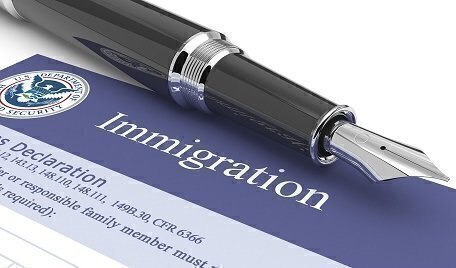If Justice Department lawyers follow through on President Trump’s vow to vigorously defend his power to limit immigration from Mideast nations, they could be doing so in more than one appeal in federal courts. Early Thursday morning, a judge in Maryland became the second jurist within a matter of hours to rule against the President, setting the stage for a government appeal to the U.S. Court of Appeals for the Fourth Circuit.
 That would be in addition to the path the government would follow if it is going to appeal an enforcement ban issued on Wednesday by a federal judge in Hawaii; that appeal would go to the U.S. Court of Appeals for the Ninth Circuit.
That would be in addition to the path the government would follow if it is going to appeal an enforcement ban issued on Wednesday by a federal judge in Hawaii; that appeal would go to the U.S. Court of Appeals for the Ninth Circuit.The Ninth Circuit Court already has weighed in on the ongoing controversy over the Trump efforts, refusing last month to allow enforcement of the initial White House restrictions, and declining just on Wednesday to reconsider that denial. No case arising out of the dispute has yet reached the Fourth Circuit Court.
The Justice Department, in a statement Wednesday night, said it would continue to defend presidential authority, but it did not announce any immediate specific steps in the wake of the order by the Hawaii judge.
If the Administration wants to continue making the argument in court that controlling immigration from Mideast nations is an urgent national security priority, it would need to move quickly to try to regain the power that has been blocked in Hawaii and Maryland.
The orders by the judges in both states bar enforcement all across the nation. The Hawaii order is broader than the one issued in Maryland, because the judge in Honolulu blocked both the 90-day suspension of entry by foreign nationals from six Mideast nations and the 120-day suspension of entry of any refugees from any nation. The judge in Greenbelt, in a Maryland suburb of Washington, stopped only the 90-day restriction on arrivals from the six specific nations. That judge said that the challengers had not yet made a case against the entry restrictions on refugees.
In both cases, the judges rejected the government arguments that the entry limitations were required as a matter of national security against foreign terrorism. Instead, each judge found more persuasive the challengers’ argument that the restrictions were intended to target Muslims because of their religion, which would violate the First Amendment’s ban on religious discrimination.
The religious bias issue thus would be a key issue in any appeal by the government, along with the question of national security.
Both judges made a part of their rulings a refusal to put their enforcement ban on hold while the government pursued an appeal. That meant that the next step open now to government lawyers would be to seek an emergency order from a court of appeals, to permit enforcement to begin.
Although President Trump told a crowd in Nashville, Tenn., Wednesday night that he wants to take the dispute “all the way to the Supreme Court,” the more customary approach would be to move next to a court of appeals. There is a procedure for bypassing the court of appeals level and going directly to the Supreme Court, but that is seldom used.
While government lawyers would be expected to make their next move quickly, they also have an incentive not to try too soon to get the Supreme Court involved. That’s because the Court now has only eight Justices, so there is a risk or a 4-to-4 split, and that could frustrate the Administration’s legal goal.
The nomination of a potential ninth Justice comes under review on Monday, with the opening of Senate Judiciary Committee hearings for Judge Neil Gorsuch. If that process were to move quickly, Gorsuch could be at work on the Court in time to take part in any review of lower court actions on the immigration controversy, with the possible opportunity to break a tie.
Legendary journalist Lyle Denniston is Constitution Daily’s Supreme Court correspondent. Denniston has written for us as a contributor since June 2011 and has covered the Supreme Court since 1958. His work also appears on lyldenlawnews.com.Recent Stories on Constitution Daily
Hawaii judge blocks new Trump immigration orderWhy would candidate Trump’s statements be considered in immigration lawsuits?Trump team opens defense of new immigration limits






